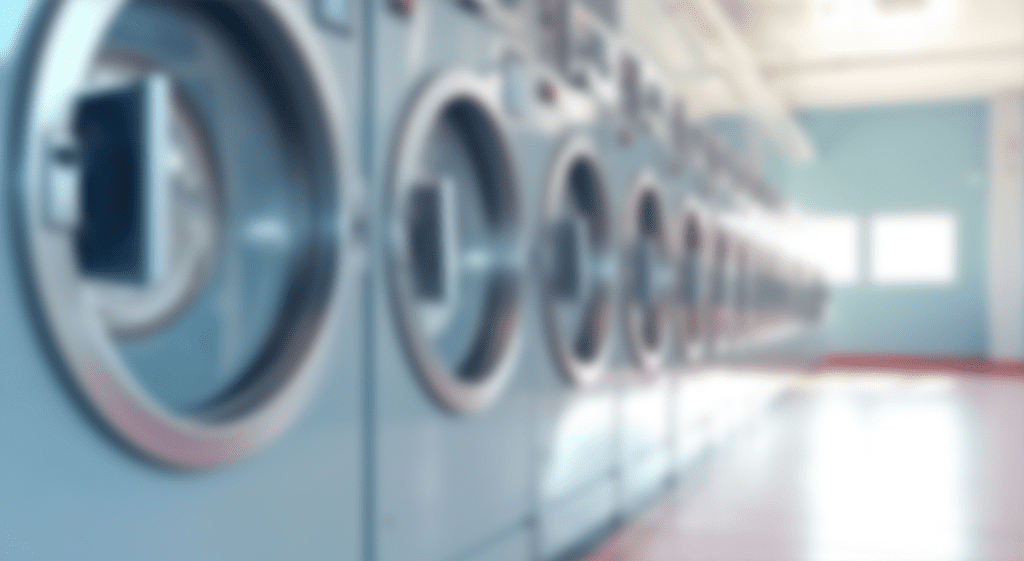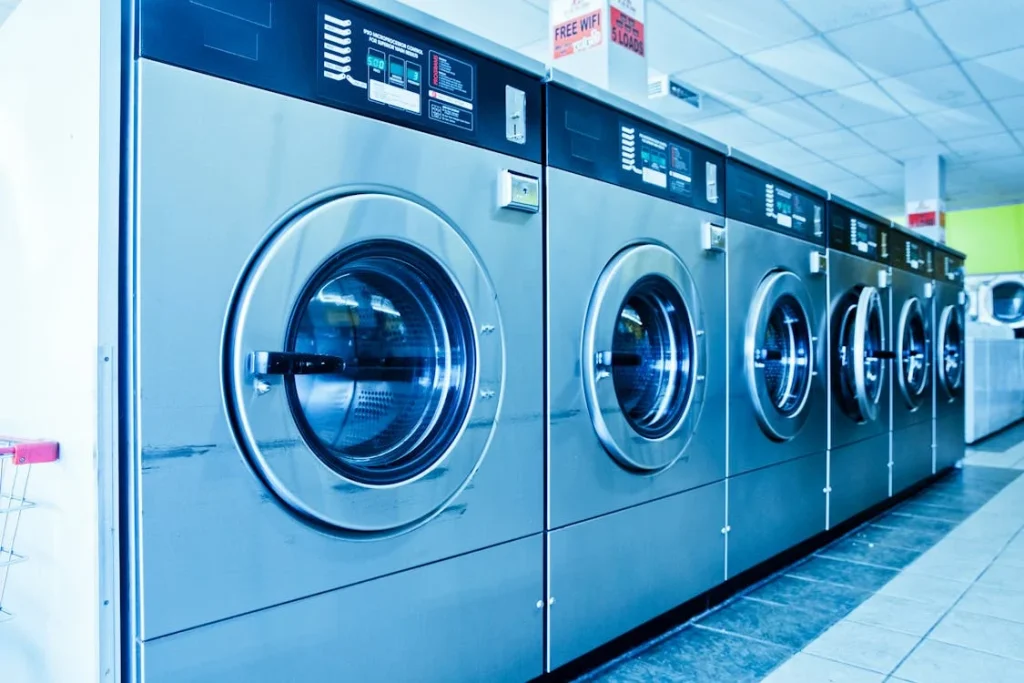Your industrial wash extractor is the backbone of your laundry operation, working tirelessly to ensure clean and fresh linens. However, no machine lasts forever. Over time, wear and tear start taking their toll, leading to higher costs, lower efficiency, and poor washing results. Then it’s time for your industrial wash extractor upgrade.
Tabla de contenidos
- 1. Introduction
- 2. Rising Energy and Water Bills
- 3. Frequent Breakdowns and Costly Repairs
- 4. Poor Wash Quality and Inconsistent Performance
- 5. Increased Downtime and Slower Productivity
- 6. Compliance and Sustainability Concerns
- 7. How to Choose the Right Wash Extractor for Your Business
- 8. Pro Tips for Extending the Lifespan of Your Wash Extractor
- 9. Conclusion
- 10. FAQs

1. Introduction
So, how do you know when it’s time to replace your old machine? While regular maintenance can extend its lifespan, there comes a point when upgrading is the smarter financial and operational decision. Here are five clear signs that you need a new wash extractor and expert tips to maintain your laundry equipment for maximum efficiency.
2. Rising Energy and Water Bills
2.1. How Old Machines Consume More Resources
If you’ve noticed a spike in your energy and water bills without an increase in laundry volume, your aging wash extractor could be the culprit. Older models tend to use excessive amounts of water and electricity due to outdated technology and worn-out components. Motors work harder, heating elements take longer, and inefficient spin cycles increase drying times—all of which drive up utility costs.
2.2. How a New Wash Extractor Saves Energy and Water
Modern wash extractors are designed with energy and water efficiency in mind. Features such as high-speed extraction, advanced load sensing, and precision water levels help reduce waste while maintaining optimal cleaning performance. Investing in an energy-efficient model can significantly cut down operational costs in the long run.
Explore energy-efficient wash extractors here.
2.3. Maintenance Tips to Reduce Utility Costs
Before committing to a new machine, ensure your current one is operating at its best:
- Regularly clean filters to maintain water flow efficiency.
- Use the right amount of detergent to prevent excessive suds, which force extra rinse cycles.
- Inspect and replace worn-out seals and gaskets to prevent water leaks.
- Ensure proper load balancing to reduce strain on the motor.
3. Frequent Breakdowns and Costly Repairs
3.1. The Hidden Costs of Repairs
If you find yourself frequently calling a technician, it’s a sign that your wash extractor is on its last legs. While occasional repairs are normal, constant breakdowns can quickly add up. The cost of replacing parts, service fees, and downtime in operations make it a financial burden.
3.2. Why Newer Models Offer Better Reliability
New industrial wash extractors are built for durability, using advanced engineering and higher-quality materials. They also come with manufacturer warranties, reducing unexpected repair costs. Investing in a new model eliminates the stress of unplanned machine failures and keeps your laundry business running smoothly.
3.3. Preventative Maintenance to Minimize Breakdowns
- Perform routine inspections to catch small issues before they turn into major problems.
- Keep belts and bearings well-lubricated to prevent friction damage.
- Clean drain hoses and pumps regularly to prevent blockages.
- Follow manufacturer-recommended service schedules.
4. Poor Wash Quality and Inconsistent Performance
4.1. Signs of Declining Wash Performance
If customers or staff are complaining about poor wash quality, your machine may no longer be delivering optimal results. Signs of declining performance include:
- Stains and odors lingering on fabrics.
- Uneven washing, with some areas not getting fully cleaned.
- Residual detergent or excessive suds left on linens.
4.2. The Impact of a Newer Machine on Laundry Quality
New wash extractors feature advanced programming that adjusts water levels, cycle durations, and drum movements to ensure thorough cleaning. These machines also have improved detergent mixing capabilities, leading to brighter, fresher, and better-maintained linens.
Upgrade to a high-performance wash extractor today!
4.3. How to Maintain Wash Quality in an Older Machine
If you’re not ready to upgrade just yet, try these tips to improve wash performance:
- Use high-quality detergents and ensure proper dosing.
- Check water temperature settings to optimize stain removal.
- Avoid overloading the machine, as it limits water and detergent distribution.
- Clean the drum regularly to prevent detergent buildup.
5. Increased Downtime and Slower Productivity
5.1. How an Outdated Extractor Slows Down Your Business
In industrial laundry operations, time is money. If your machine takes longer than usual to complete cycles, it’s reducing overall productivity. Longer wash cycles and extended drying times due to poor water extraction mean delayed turnaround times and lower output.
5.2. Efficiency Gains with a New Wash Extractor
Upgraded machines boast faster wash and spin cycles, reducing overall processing time. Advanced technology allows for real-time monitoring and automation, so you can streamline workflow and improve efficiency.
5.3. Ways to Improve Productivity Without Replacing Your Machine
- Train staff on proper loading techniques to maximize efficiency.
- Implement a regular cleaning schedule to prevent buildup that slows down operations.
- Invest in backup washers to reduce downtime during maintenance.
6. Compliance and Sustainability Concerns
6.1. Meeting Modern Industry Standards
Government regulations and industry standards are constantly evolving, with increasing emphasis on energy conservation, water efficiency, and workplace safety. If your machine doesn’t comply with these regulations, you risk fines or higher operational costs due to inefficiencies.
6.2. Eco-Friendly and Cost-Effective Laundry Solutions
Newer wash extractors incorporate:
- Low-water consumption technology.
- Energy Star ratings for reduced electricity usage.
- Advanced filtration systems to prevent water pollution.
Ensure your laundry business stays compliant and sustainable!
7. How to Choose the Right Wash Extractor for Your Business
7.1. Key Features to Look for in a New Machine
When selecting a new industrial wash extractor, consider:
- Capacity: Match machine size with your daily laundry volume.
- Spin Speed: Higher speeds reduce drying time, saving energy.
- Programmable Controls: Allow customization for different fabrics and load types.
- Energy Efficiency: Look for water-saving and low-energy models.
7.2. Budget Considerations and ROI Analysis
Upgrading is a significant investment, but the return on investment (ROI) is well worth it. Consider long-term savings in energy, water, maintenance, and improved productivity when calculating costs.
8. Pro Tips for Extending the Lifespan of Your Wash Extractor
If you want to get the most out of your existing wash extractor before upgrading, follow these expert maintenance tips:
- Use Manufacturer-Approved Parts – Using generic parts may seem cost-effective, but they can cause premature wear and tear.
- Inspect Door Seals Regularly – A damaged seal can cause water leakage, increasing water waste and leading to potential damage to electrical components.
- Calibrate Water Levels – Incorrect calibration can lead to inefficient water usage and inconsistent washing performance.
- Keep the Control Panel Dry – Moisture and humidity can damage electrical components and cause malfunctioning of the washer.
- Schedule Professional Servicing – Having a technician inspect your machine periodically ensures any underlying issues are detected early.
9. Conclusion
If your current wash extractor is showing any of these five signs—rising costs, frequent breakdowns, poor performance, slow productivity, or compliance issues—it’s time to consider an upgrade. Investing in a modern, energy-efficient, and high-performance machine will ensure better results, lower operational costs, and a smoother workflow.
Need expert guidance on upgrading your industrial wash extractor? Contact us today!
10. FAQs
1. How do I know if my industrial wash extractor needs replacing?
If your machine is frequently breaking down, consuming too much water and energy, or delivering poor wash quality, it’s time to upgrade.
2. Can I still maintain an old wash extractor instead of replacing it?
Yes, regular maintenance can extend its lifespan, but eventually, repair costs and inefficiencies will make upgrading the better choice.
3. What is the best type of industrial wash extractor for high-volume laundry?
High-capacity, high-speed extractors with programmable controls are ideal for large-scale operations.
4. How does a new wash extractor improve productivity?
Newer models feature faster cycles, better spin speeds, and automation, reducing downtime and increasing efficiency.
5. Where can I find top-rated industrial wash extractors?
Check out Spin Washing’s collection of commercial washers for high-quality options.
Here are some other articles that we think might interest you:
Environmental Impact of Industrial Laundry


